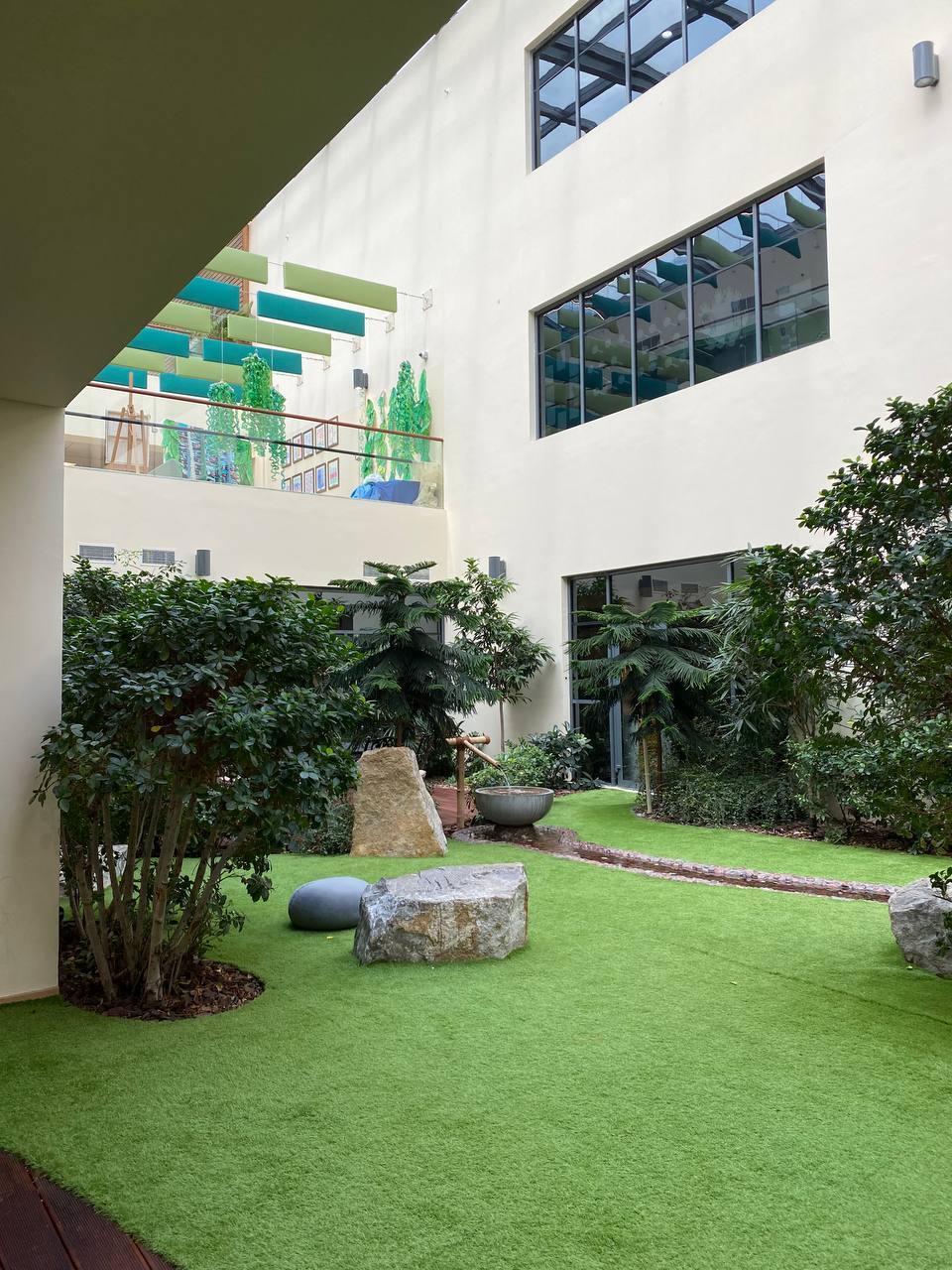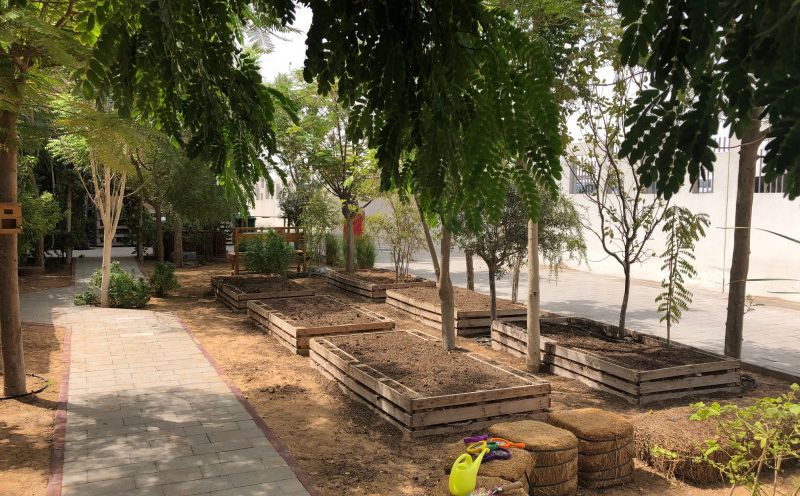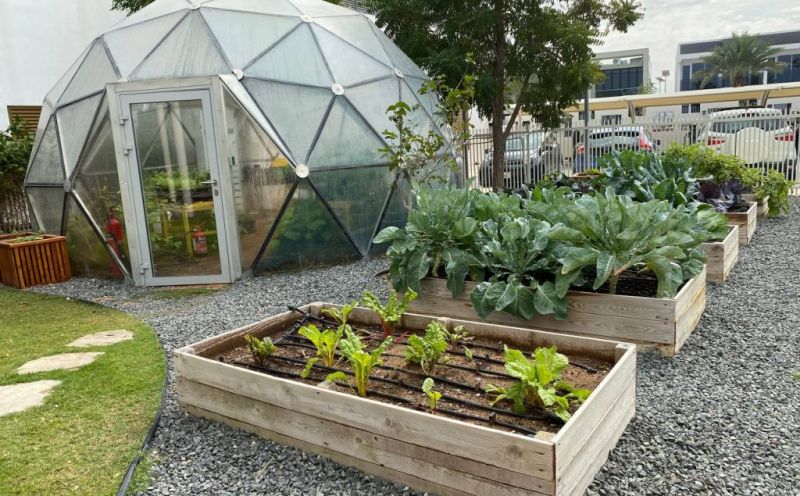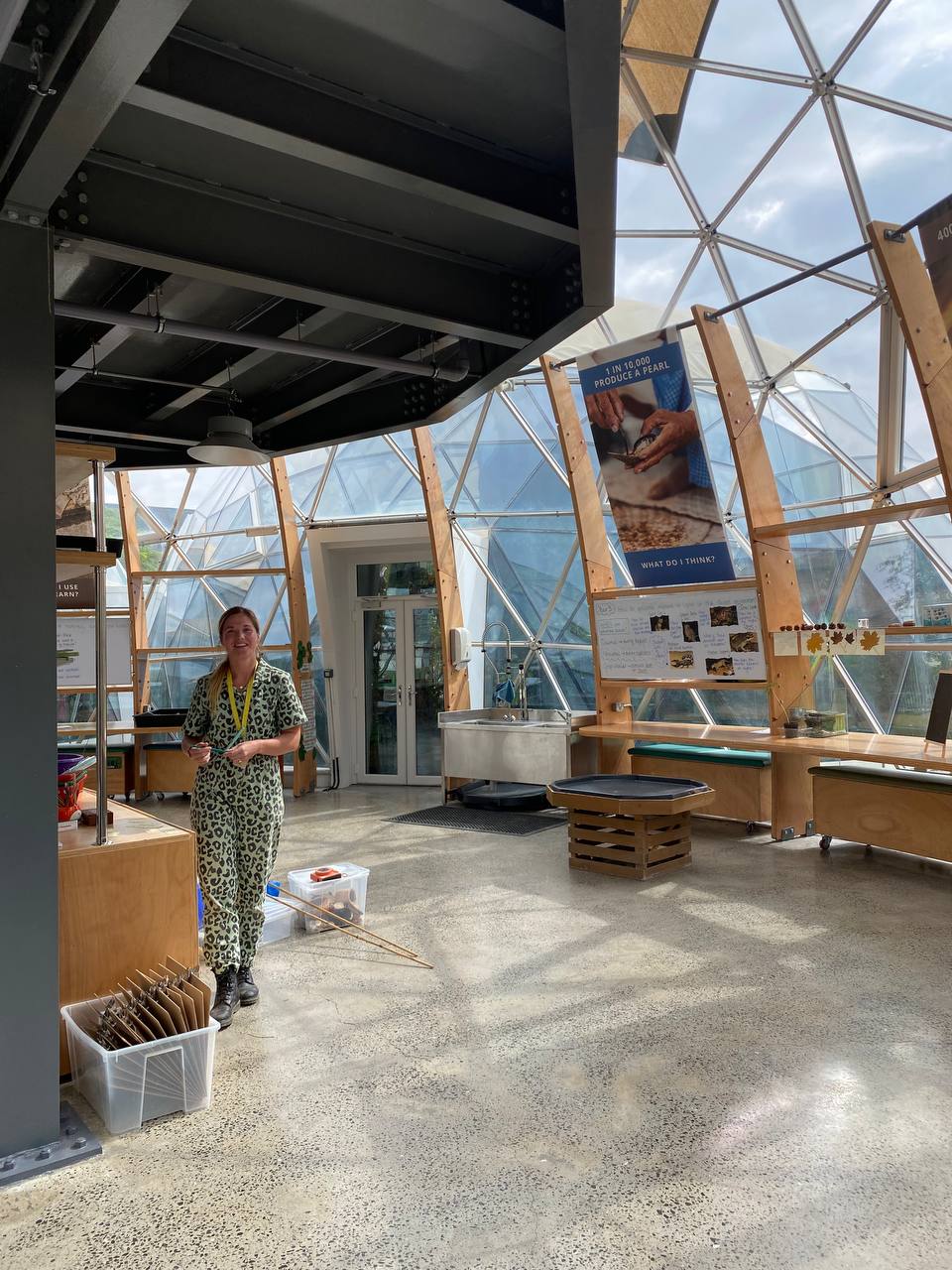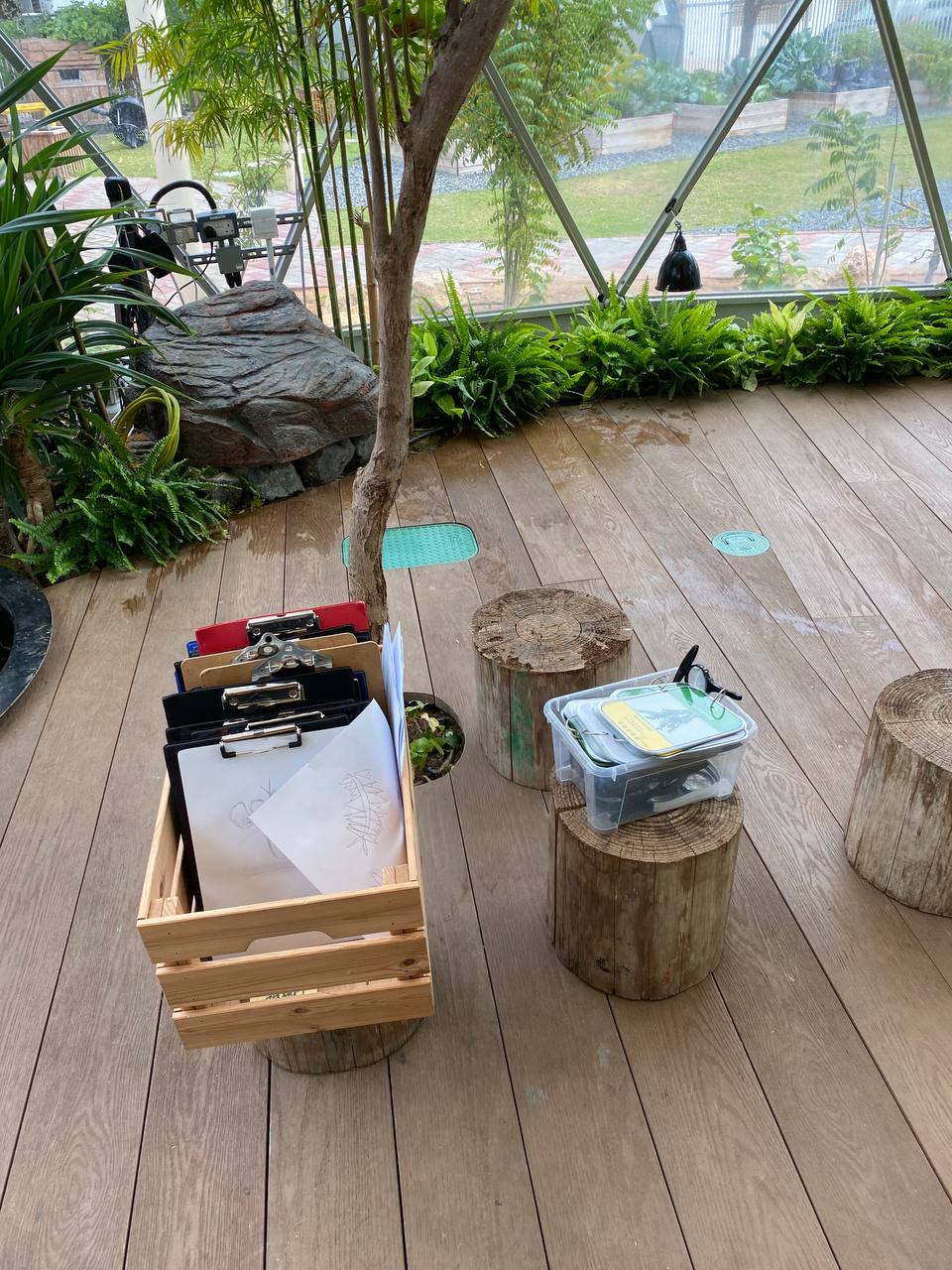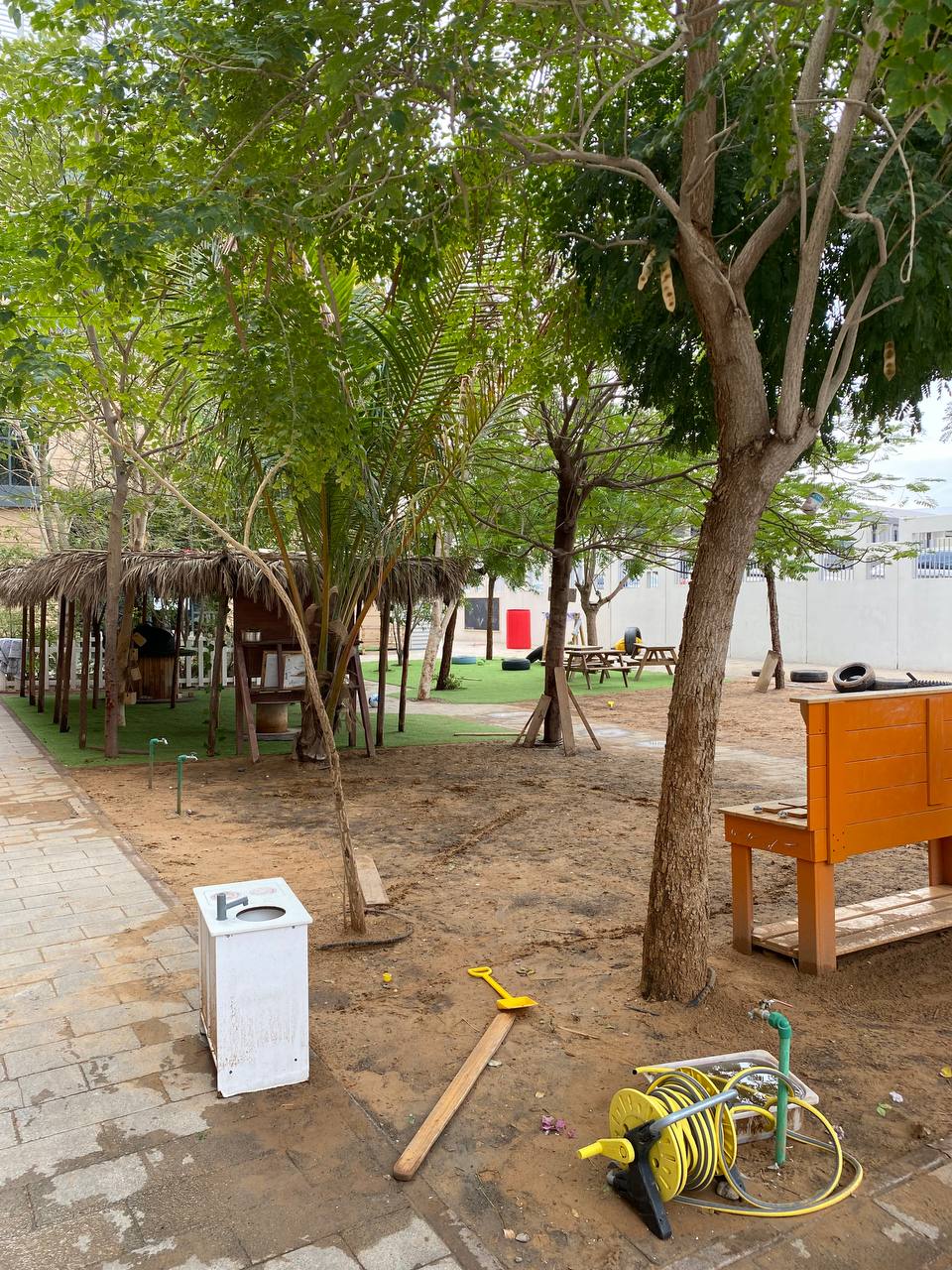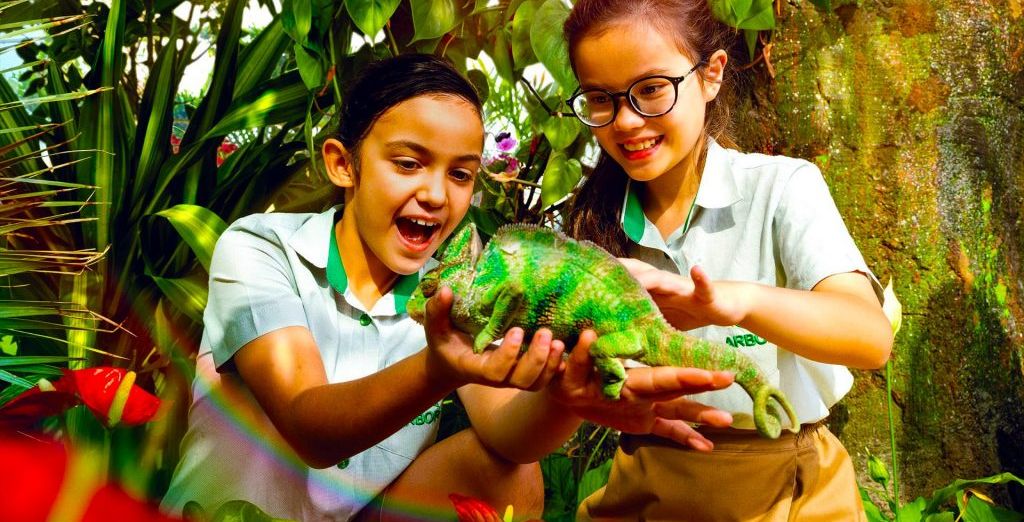Nature is the best place to study, according to the founders of the Arbor School, and in 2018 they built a school in Dubai with the main goal of creating a natural oasis in the city’s concrete jungle. In order to implement this idea, it was necessary to create not just a piece of nature in the school but an actual natural environment to accommodate both play and study. Such a space was built with the help of natural materials, including greenhouses with vegetables and fruit and orangeries hosting a variety of plants. Today more than 1000 children study here, with class sizes ranging from 20 – 24 students depending on age.
Arbor School is attended by children of all ages, starting from three years old all the way to the 11th grade, with around five classes per grade. Each grade has its own block with classrooms, seating areas, and outdoor spaces sheltered from the sun.
The school building is traditional for Dubai: there is a swimming pool, a gymnasium, a canteen for children, and a cafe for parents and guests, which, by the way, makes bread from zucchini grown at the school (in the gallery below). There is a reception at the entrance, followed by a courtyard with a brook known as the reflection garden: here, children play and meditate. In an atypical move, Arbor School also boasts of special areas containing a wooden playground and recycled items, such as old car tires.
Photo: EdDesign Mag
The school uses literally every inch of the walls, desks, and racks for learning. As students progress through the year’s curriculum, the space is filled with drawings, diagrams, and mockups. Later these are removed to make room for new projects. In the corridors, there are tables with containers filled with soil and sand, branches, tree branches, stones, shells, trowels, and watering cans, allowing the students to explore the natural world through “messy play.” “Don’t expect your child to come home clean. Not with us,” Principal Brett Girven says on tours of the school.
The administration and teachers of the school are professionals with qualifications in geographical, biological, and environmental education. The Director General and cofounder, Dr. Saad al-Omari, holds a Doctorate of Paleoclimatology. Since 2020, the school has been lead by Brett Girven, a zoologist and conservationist. Director of Education Ken Jones is a geographer and environmental studies professional. Environmental Education expert Ben Hren has a master’s degree in environmental landscape design and was formerly head of the education department at the World Wild Fund for Nature UK.
The school employs a total of 71 teachers.
Biopark for any lesson
A special place on the school grounds is dedicated to six climate-controlled biodomes. Three of the most spacious domes are located in the centre of the school’s biopark, designed specifically for seed multiplication. All seeds are obtained organically, and vegetable varieties are specially selected for growing in hot climates. In two other large biodomes, students grow tomatoes, cucumbers, beans, peas, bananas, and papaya. In addition, there are open soil beds next to the biodomes, protected by netting from the scorching sun and insects, where fragrant herbs are sown.
The Arbor School has also constructed several orangeries with tropical plants, such as palms and cacti. These orangeries act as scientific laboratories for the study of plants and insects.
Photo: schoolscompared.com
In the smaller domes located at the entrance to the school, students grow vegetables: zucchini, eggplants, and chili peppers. While the biofarm is equipped with containers for compost, garden sheds, and a tank for aquaponics, the priority is to grow plants in the ground, utilizing the local soil.
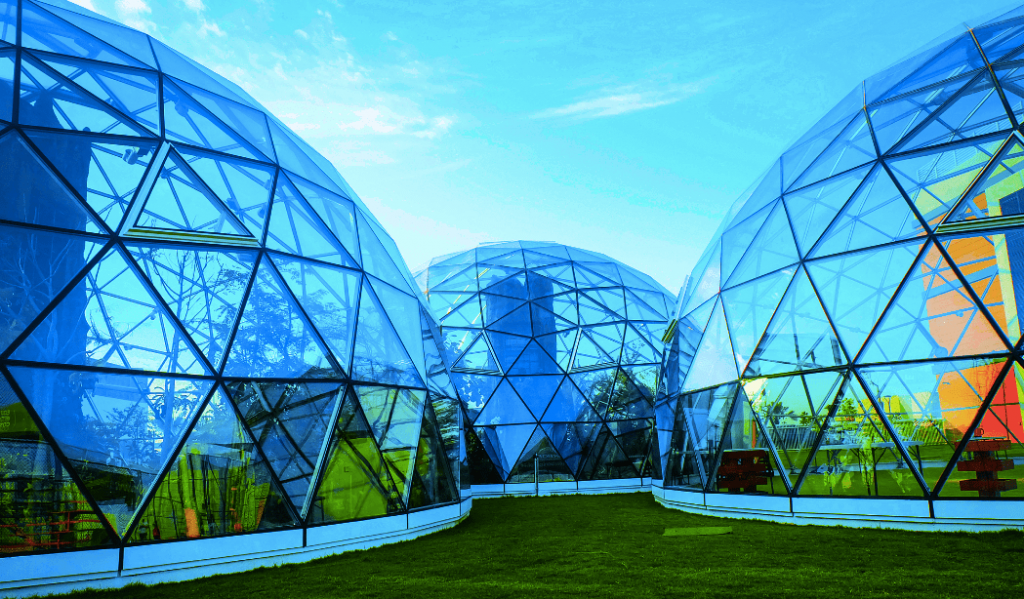
Photo: schoolscompared.com
Work in biodomes is organized so that all students share in the responsibility for the care and cultivation of the plants rather than allocating specific students to certain plants. Throughout the school year, teachers explain the growth conditions of each plant and instruct students on how to regulate the temperature and humidity in the greenhouse.
The educational approach at Arbor School is based on the child’s natural curiosity (“curiosity approach”) and the opportunity to observe plant life, ask questions, and conduct experiments.
Photo: EdDesign Mag
The Biopark is also multi-functional, allowing students to engage with the campus for a wide variety of activities. For example, the orangery plays the role of a chemistry or physics class, a storytelling or drawing class. English teachers take children to the orangery to write essays, encouraging students to embrace the sights and sounds of the natural world around them and use the five senses to give the most accurate description of the rustling of leaves, the smell of herbs, or the behavior of insects.
With a small fenced-in area for animal life, the school is also home to a family of hedgehogs, a snake, and a big tortoise – an innovative approach for Dubai.
Photo: schoolscompared.com
Environmental education program
Arbor school also teaches students to look at the surrounding world through the lens of ecology and sustainable development. Students regularly measure the amount of resources they consume, and a specialized company, Metanoia, helps the students process the data. Several times a year, the company representatives have discussions with students. Based on the results of their research, the children offer solutions that will help save resources and lower the impact on the environment.
For example, schoolchildren estimated that students, staff and parents travel a total of around five million kilometers a year to take students to and from the campus. The students wondered if they could reduce that figure. They suggested increasing the number of passengers on each bus and working more actively with families who live near the school so that local children would choose to attend Arbor School rather than taking the car or bus to distant schools.

“The school aims at encouraging students to create new things, to bring about change. Many people consider environmental problems important and calling to be solved, and many would like to contribute. But how many people actually do it? At Arbor school, we’re committed to making sure that graduates don’t just know but act,” says Principal Brett Girven.
Projects outside school
Arbor School organizes regular trips to the beach for students (“Sea School”), another unusual approach to education in Dubai. . There, children collect natural materials , which they bring to school to study.
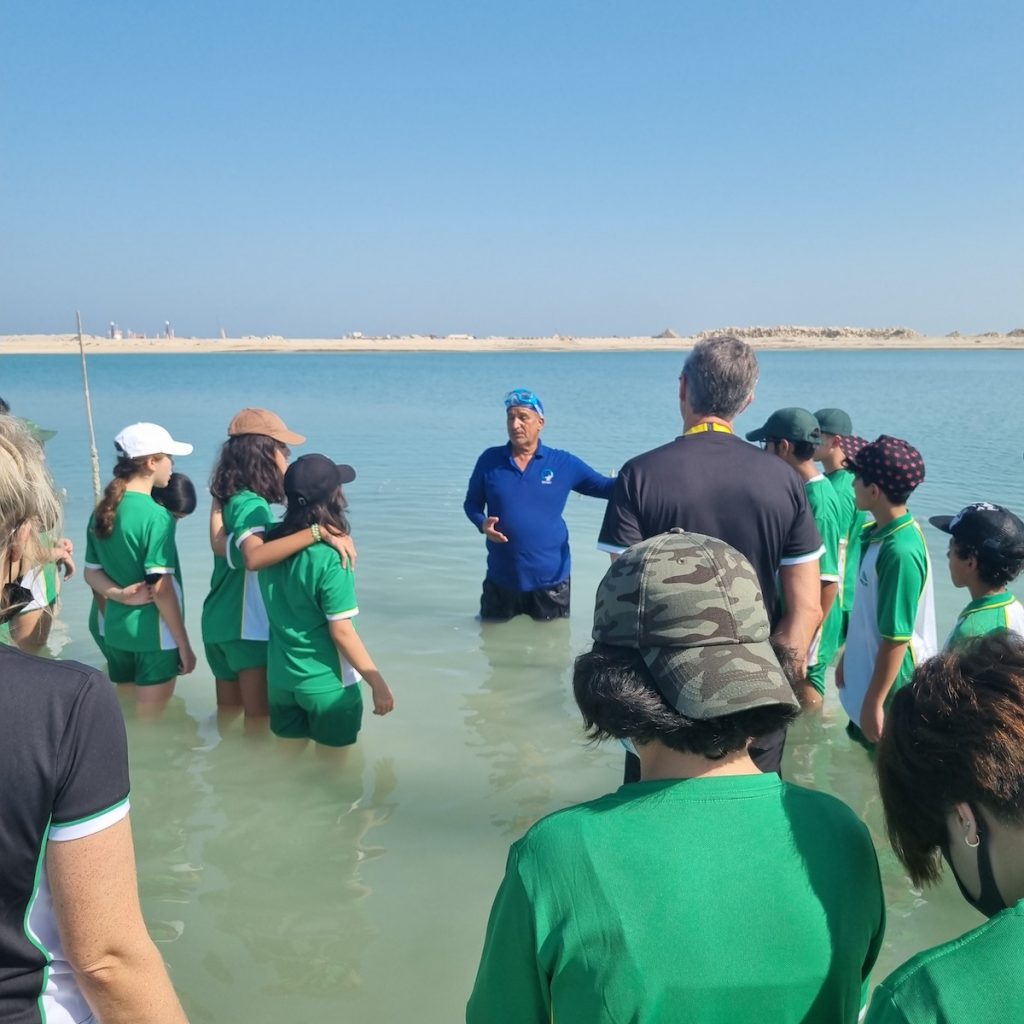
Photo: schoolscompared.com
Founded in November 2021, the school launched the Dubai Oysters Project in collaboration with local restaurant MAINE and the Emirates Marine Environmental Group. The goal of the project is to restore the natural reef system off the coast of Dubai and preserve marine biodiversity.
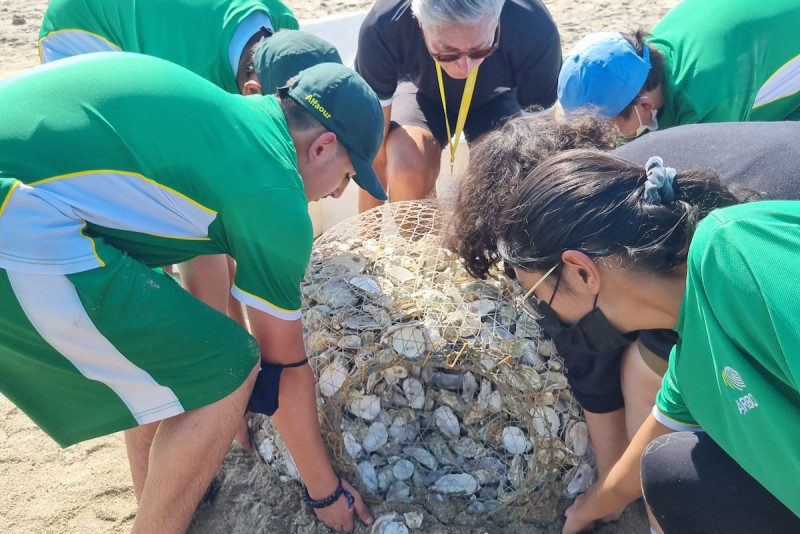
Photo: schoolscompared.com
As part of the partnership, Maine restaurant donated 250,000 oyster shells to the school that would have instead gone to the landfill. Secondary school students studying UAE oceanography filled unused fish cages with oyster shells in order to create artificial reefs and habitats for marine plants and animals.
According to Ben Hren, environmental education advisor at Arbor School, the Dubai Oysters project is a unique opportunity to bring the school curriculum into the real world.
July 2023
